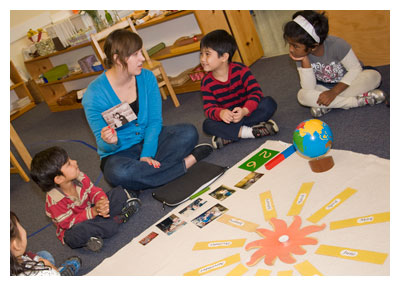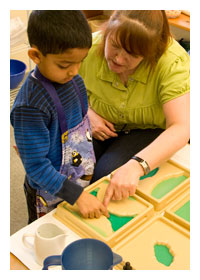The Goal: Understanding and Enjoying the Wondrous World We Live In
At LePort, we help our students acquire the essential knowledge, thinking skills, and strength of character required to flourish as joyous children today, and as successful adults tomorrow. We want to equip them with a wealth of knowledge that enables them to understand and delight in both the wondrous world around them, and their personal identity within.
The Cultural Subjects in our Montessori preschool classrooms provide our students with a first exposure to the many areas of knowledge they will encounter later on – and enable them to acquire an early interest in learning about the world, its natural wonders, its people, history and culture, its music and art.
Historically, many of mankind’s greatest thinkers were travelers. Through their travels, they acquired a deep interest in people and societies, in landforms and physical materials. This knowledge, gathered through experience, formed the foundation for their later work in history, science, literature, business. So it is with the LePort student. The Montessori cultural studies offer each preschool child the opportunity to “travel” and explore the world from within the classroom, and to thereby acquire the knowledge base that will inform, motivate, and ground the systematic studies they will pursue in elementary school and beyond.
What We Deliver
An Appreciation For and Joy In Discovering the Many Wondrous Things in the World
By being exposed to a wide range of experience in our classrooms in an enjoyable, no-pressure, child-led environment, we sow the seeds from which future curiosity and learning can grow. We enable our students, at a time when their minds are able to learn with ease, to acquire a broad range of experiences and vocabulary, laying the foundation for future studies in science, history, geography and literature. Most importantly, our students experience the joy of learning – about the physical world, about people and their unique cultures, and about the pleasures of art and music.
 Cultural
Studies in our preschool classrooms encompass a broad range of
materials and experiences: they are the young child’s introduction to
exploring and experiencing the world in his classroom.
Cultural
Studies in our preschool classrooms encompass a broad range of
materials and experiences: they are the young child’s introduction to
exploring and experiencing the world in his classroom. Music.
In our classrooms, children have the opportunity to learn music in many
different ways: singing, auditory (listening), and eurhythmics
(movement); ear training using the Montessori Bells and Orff
Instruments; basic introduction to instruments, music theory and
composition; and the exploration of the role of music in history and
literature. We start the introduction of music with singing, the most
natural way to enjoy and appreciate music. We select music that is in
the voice range of children, and incorporate movement into our songs.
Throughout, we choose from a broad range of genres, from folk and
popular music to traditional children’s song; from classical to
contemporary composers. As the children sing and move to the music, as
they listen to it played during the work periods, they learn to
recognize a variety of musical styles and become familiar with the power
of this universal language.
Music.
In our classrooms, children have the opportunity to learn music in many
different ways: singing, auditory (listening), and eurhythmics
(movement); ear training using the Montessori Bells and Orff
Instruments; basic introduction to instruments, music theory and
composition; and the exploration of the role of music in history and
literature. We start the introduction of music with singing, the most
natural way to enjoy and appreciate music. We select music that is in
the voice range of children, and incorporate movement into our songs.
Throughout, we choose from a broad range of genres, from folk and
popular music to traditional children’s song; from classical to
contemporary composers. As the children sing and move to the music, as
they listen to it played during the work periods, they learn to
recognize a variety of musical styles and become familiar with the power
of this universal language.